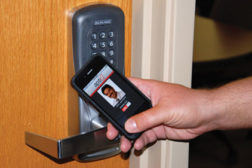Home » access management
Articles Tagged with ''access management''
More Access Controls to Bridge
New Safety, Security Rules for Cruise Ship Industry
Follows Costa Concordia Tragedy
April 26, 2012
Sign-up to receive top management & result-driven techniques in the industry.
Join over 20,000+ industry leaders who receive our premium content.
SIGN UP TODAY!Copyright ©2024. All Rights Reserved BNP Media.
Design, CMS, Hosting & Web Development :: ePublishing









